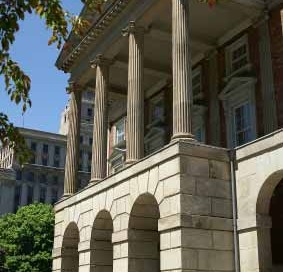
Bracken v. Fort Erie (Town), a recent Ontario Court of Appeal ruling that quashed a trespassing charge against a self-described “citizen journalist” for protesting on municipal property, has been hailed as a victory for the right to free speech. It is also instructive for both employers and employees trying to navigate the appropriate balance between an individual’s right to express themselves – even in anger- against the right of employees to safety and security in the workplace.
Fredrick Bracken disagreed with the Town of Fort Erie’s decision to permit a medical marijuana facility to be built across the street from his home. On June 16, 2014, while Bracken was protesting at Fort Erie’s Town Hall, employees became alarmed by his behaviour and contacted the city’s Chief Administrative Officer. The Town Hall was placed under lockdown and the police called. Two officers from the Niagara Regional Police attended and requested that Bracken leave the premises. The police also provided Bracken with a trespass notice which banned him from the Town Hall and other municipal facilities for one year.
When Bracken refused to leave, he was arrested.
Bracken brought an application challenging the constitutionality of the trespass notice under section 2(b) of the Charter, which deals with freedom of thought, belief, opinion and expression. The application judge concluded that Bracken’s acts of protest were not protected by section 2(b).
The Court of Appeal disagreed, quashing the trespass notice and declaring that the issuance of the trespass notice by the Town constituted a violation of Bracken’s rights under the Charter.
In a unanimous decision authored by Justice Bradley Miller, the Court held that the application judge made an error of law in concluding that Bracken’s protest did not fall within the ambit of section 2(b) of the Charter. Specifically, she erred by characterizing his actions as violent on the basis that some employees claimed they felt “unsafe”. The fact that the protest was loud and angry did not mean that the protest was properly characterized as “violent”.
Justice Miller went on hold that regardless of whether the trespass notice was issued for the purpose of preventing Bracken from conveying his message or for protecting employees from him, the effect was to impair his participation in each of the grounds articulated in Irwin Toy Ltd. v. Quebec (Attorney General), [1989] 1 S.C.R. 927 –the Supreme Court of Canada’s landmark decision on freedom of expression– namely enabling democratic discourse, facilitating truth seeking, and contributing to personal fulfillment, and was therefore a violation of his Charter rights. Miller J.A. further held that the violation was not justified under section 1 of Charter, as it was not proportional.
While this judgment is a victory for Bracken –who represented himself on the appeal– and for the right to free speech, the Court of Appeal’s clarification of the scope of protection under section 2(b) of the Charter, and particularly its distinction between “violent protest” and “uncivil protest”, has broad and significant implications.
While the Supreme Court has held that acts of physical violence or threats of violence do not fall within the scope of section 2(b) of the Charter, Justice Miller held that the application judge’s extension of the concept of violence to include actions and words on the basis that some employees felt unsafe, goes too far.
Miller J.A. noted that the application judge relied principally on the evidence of town employees who claimed that they feared for their physical safety. He emphasized, however, that only one employee had any face-to-face interaction with Bracken, and only after he was in handcuffs and had been placed under arrest. In fact, all of the employees who witnessed the protest observed Bracken from “a safe distance”. While the employees were frightened, Miller J.A. held that the evidence disclosed no reasonable basis for their fear.
“Violence is not the mere absence of civility”, Justice Miller concluded. “A person’s subjective feelings of disquiet, unease, and even fear, are not in themselves capable of ousting expression categorically from the protection of s. 2(b).”
This case is instructive as we attempt to balance the constitutional right of all Canadians to express themselves freely against the right to physical safety at work or anywhere else. The objective of political protest is to make people feel uneasy. The Court of Appeal has signaled that where there is no actual physical violence or threat of violence, it will not restrict free speech simply to spare others’ discomfort, even in a working environment.

One Comment on "Does an Individual’s Right to Free Speech Trump Employees’ Rights to Safety and Security at Work?"
Trackbacks for this post